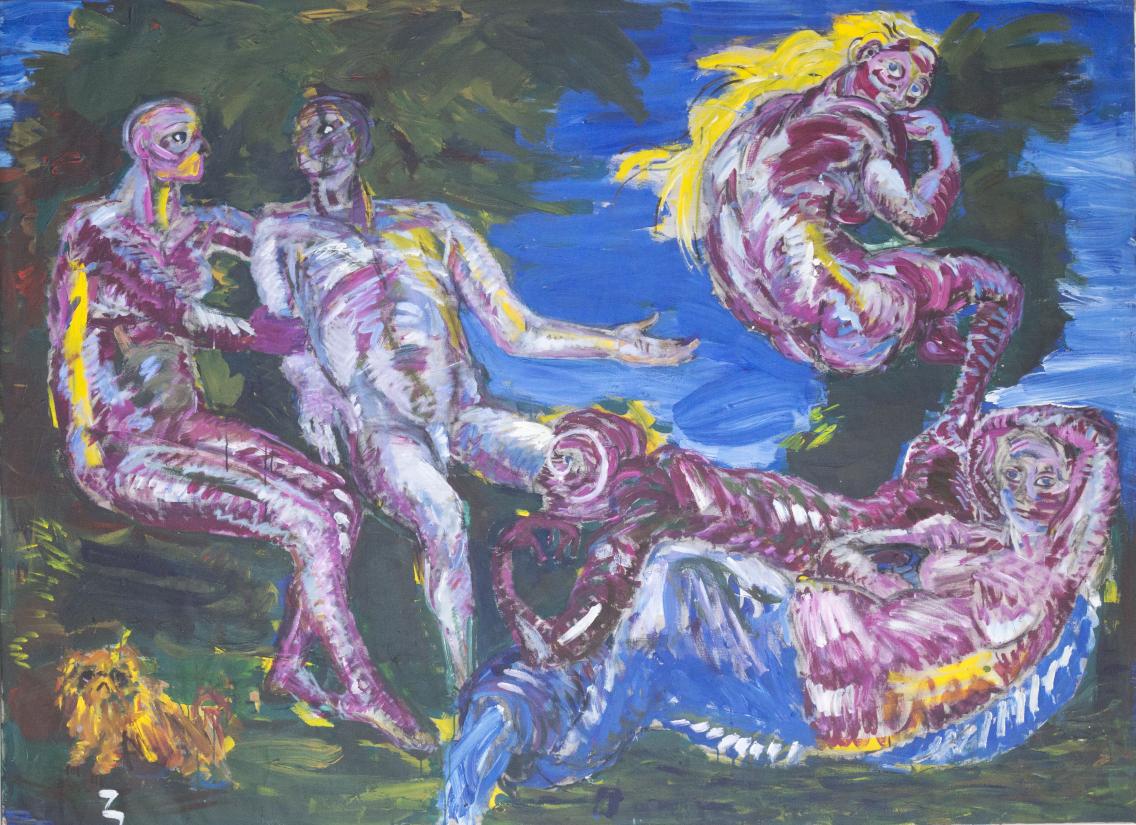How can cutting-edge technology reveal the artist’s technical secrets – and should we uncover them? Can ‘mad art’, created by persons with severe psychiatric diagnoses, provide access to alternative visions and new constellations of meaning? How does a British scholar view art from the ‘golden age’ of Danish painting – is it strictly national or perhaps an integrated part of a wider European phenomenon? These are three of the questions to be addressed in research projects after the New Carlsberg Foundation’s most recent allocation of research grants.
The grants are part of the New Carlsberg Foundation’s Research Initiative, which was launched in 2010 to promote art research. At the time of writing, 41 scholars are either engaged in or have completed their projects at museums all over Denmark. Another 12 scholars recently received a positive reply to their grant applications, for a total donation of about DKK 16 million.
Read more about research projects under the New Carlsberg Foundation Research Initiative.
A stronger connection
The scholars are attached to a Danish art museum and are formally employed by a university. With the grants the foundation aims to build a bridge between university and museum research environments, as the connection between the two settings had become quite limited.
‘With the new grants we continue our effort to enhance the level of research in museums, to produce useful research results and to inspire talented researchers to take a greater interest in the living art scene that the art museums are such a central venue for. We consider this a highly beneficial construction that simultaneously promotes the research environments in museums and produces new art research that relates more directly to the museum context,’ says professor Morten Kyndrup, member of the board for the New Carlsberg Foundation.
A mutual knowledge exchange
‘Our purpose is to ensure that the exchange of knowledge between universities and museums is not solely a matter of good intentions and solemn declarations but is fuelled by concrete action. In this arrangement, the scholars engage in a research field that a museum finds relevant and are required to teach at the university, thus bringing the museum research field into the universities and bringing their university research environment into the museums,’ says Morten Kyndrup.
This year’s recipients of research grants
PhD scholarships:
- Kunstforeningen Gl Strand/University of Copenhagen: ‘Kunstforeningens betydning for dansk kunstliv 1825-1900’ [The significance of Kunstforeningen [The Art Society] for the Danish art scene 1825–1900]
- Clay Museum of Ceramic Art/University of Southern Denmark in Kolding: ‘Axel Saltos rolle hos Den Kgl. Porcelainsfabrik – mellem kunst og masseproduktion’ [Axel Salto’s role at the Royal Danish Porcelain Factory – between art and mass production]
- National Museum of Denmark/University of Copenhagen: ‘Mellem kulturarv og væbnet konflikt – museumssamfundets vilkår i et transnationalt krydsfelt’ [Between cultural heritage and armed conflict – the conditions of the museum world in a transnational field]
- The Hirschsprung Collection/University of Copenhagen: ‘Dansk symbolisme i en tysk optik’ [Danish symbolism through a German lens]
- Ny Carlsberg Glyptotek/Aarhus University (two scholarships): ‘Auguste Rodin belyst igennem sin egen kunstsamling’ [Auguste Rodin in light of his own art collection] and ‘Hvordan har Antikken betydning for læring og erkendelse i nutidens samfund?’ [What is the significance of Antiquity for learning and insight in today’s society?]
Postdoc scholarships:
- SMK, The National Gallery of Denmark/University of Copenhagen: A new look at the national gallery’s photographic collection
- KØS – Museum of Art in Public Spaces/Universityof Copenhagen: Mobile artistic formats in relation to building-related art
- Museum Ovartaci/Aarhus University: ‘Hvordan ”gal kunst” vedrører alment menneskelige fænomener’ [How “mad art” concerns universally human phenomena]
Project grant:
- David Jackson, professor (University of Leeds): An English-language book on Danish Golden Age painting
- Pernille Leth-Espensen, postdoc (Aarhus University): Clockworks – about time in art
- Lisbet Tarp, postdoc (Aarhus University): Painting in a digitized age



